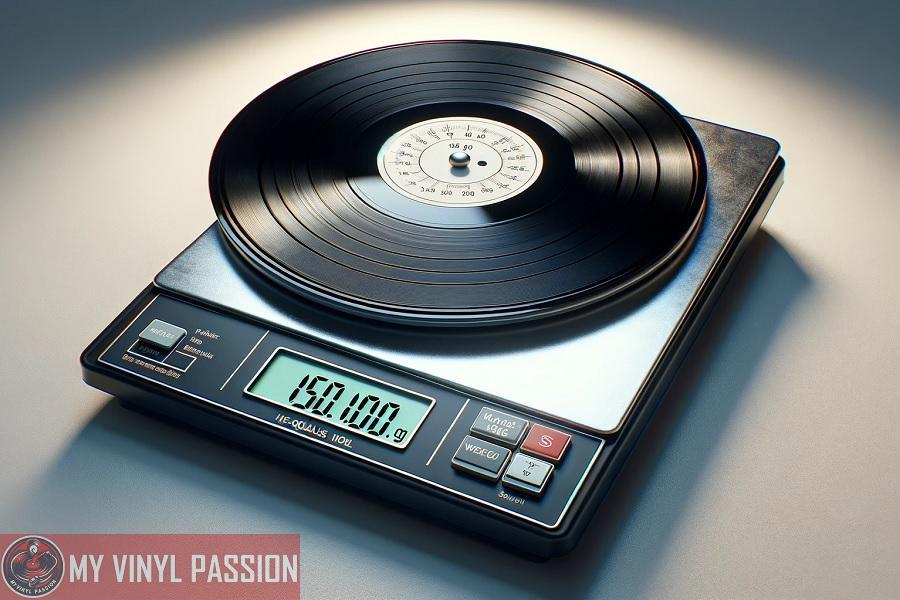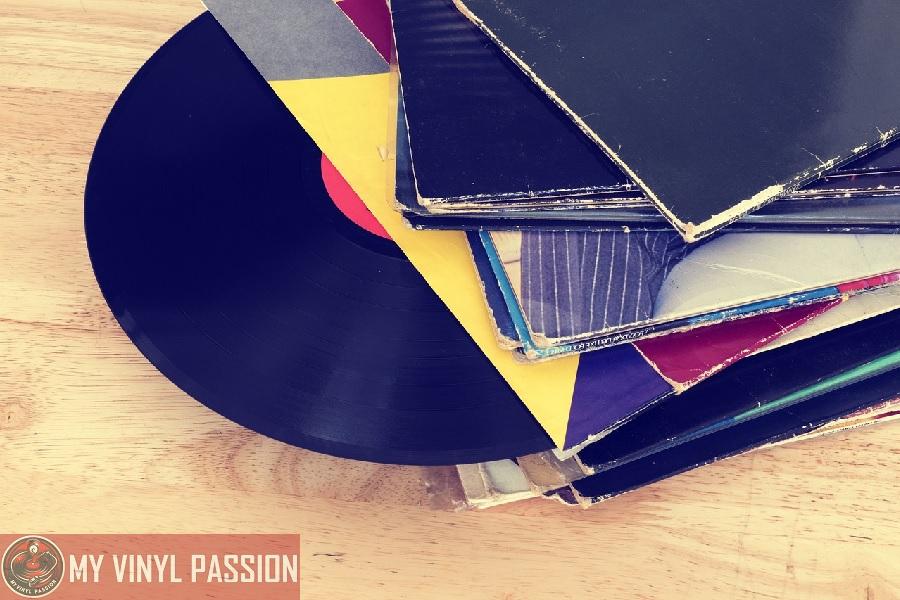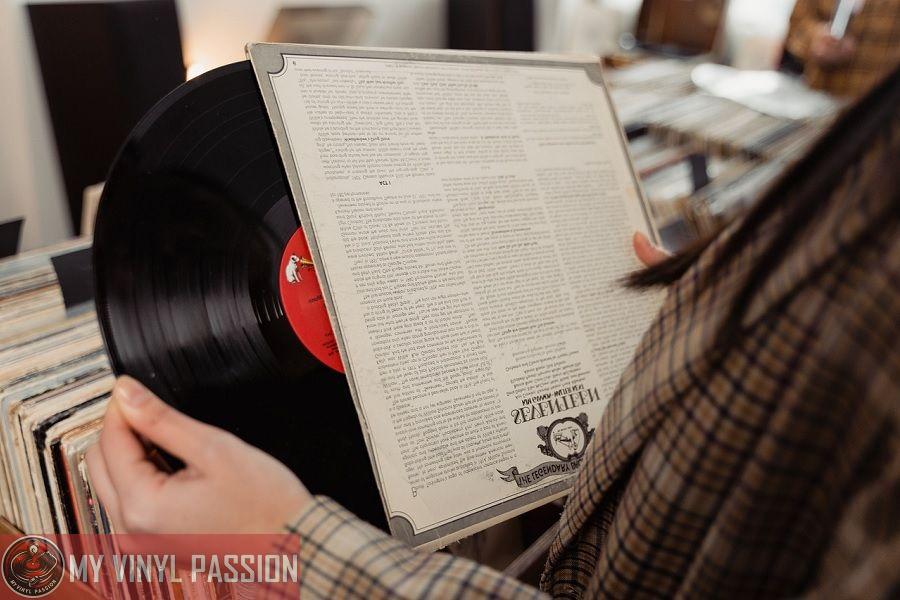As you explore the world of vinyl, you might find yourself curious about the characteristics that distinguish these records, such as their weight.
The weight of a vinyl record can vary, typically falling between 120 to 180 grams. However, audiophiles may prefer heavier vinyl records that range from 160 to 200 grams, as some believe these records offer a superior sound quality and durability.
In Summary
Standard LP Weight: A standard 12-inch vinyl LP (Long Play) record typically weighs between 120 to 150 grams.
Heavyweight Vinyl: Some audiophile and special edition vinyl records are heavier, weighing up to 180 grams or more, known as heavyweight vinyl.
7-inch Singles: Smaller 7-inch singles, commonly used for single tracks, usually weigh around 40 to 70 grams.
Weight Variations: The weight of a vinyl record can vary based on the manufacturer, the era of pressing, and the specific type of vinyl used.
The heft of vinyl records is influenced by the quality of the material used, with some manufacturers opting for virgin vinyl which is known for producing a cleaner sound.
Increased weight often implies a thicker record, but this doesn’t necessarily guarantee better sound; it can merely suggest a more substantial feel. The notable comeback of vinyl records isn’t just about the music quality—it’s about the entire experience.
Holding a vinyl record gives you a sense of its presence and history, with the weight contributing to the substantial feel of each album in your collection.
Understanding Vinyl Record Weights
When discussing vinyl records, it is important to consider that their weight can vary and this has implications for both durability and sound quality.
Standard Weights and Variations
Vinyl records typically come in three weight classes:
- Standard weight: approximately 130-150 grams.
- Heavyweight: commonly 180 grams, known for enhanced durability and potentially better sound quality.
- Super heavyweight: 200 grams and above, less common and marketed as premium due to their sturdier feel.
It is common for 180-gram vinyl records to be labeled as audiophile-grade, suggesting a higher standard of quality.
Implications of Weight on Quality
The weight of a vinyl record can influence its performance:
- Heavier records are said to have lower resonance and better vibration damping, which can reduce distortion and enhance sound clarity.
- A heavier weight might also mean a thicker record, which could be less prone to warping over time, thereby maintaining quality.
- However, the weight itself does not guarantee better sound quality; factors such as mastering and the condition of the playback equipment are equally significant.
Physical Characteristics and Compatibility
When examining vinyl records, it’s crucial to understand the physical dynamics of how different record sizes and their weights interact with turntables and styluses, as this affects the overall listening experience.
Record Sizes and Their Typical Weights
Vinyl records commonly come in three sizes: 7-inch, 10-inch, and 12-inch. The 7-inch records, typically singles, usually weigh about 40 grams. 10-inch records, often found in earlier LP formats or EPs, weigh roughly 110 grams.
The standard for most full-length albums is the 12-inch LP, which typically weighs about 120 to 180 grams.
Some special editions and audiophile pressings could weigh up to 200 grams, known as heavy-weight vinyl, for added durability and potentially better sound quality.
- 7-inch: 40 grams
- 10-inch: 110 grams
- 12-inch: 120-180 grams (up to 200 grams for heavy-weight vinyl)
How Turntables and Styluses Interact with Different Weights
Your turntable’s stylus navigates the grooves of vinyl records, translating them into sound. A heavier record can provide a more stable platform for the stylus, potentially enhancing the sound quality.
Yet, a turntable’s adjustable settings, like tracking force and anti-skate, must be compatible with the record weight for optimal sound quality and to avoid damage to both the stylus and the record.
- Turntable adjustment: Necessary to match record weight
- Stability: Heavier records can enhance stability
- Sound Quality: Potentially improved with compatible settings and heavier records
Turntables and record players are designed to work with the various weights and sizes of records, but it’s important to ensure your device is calibrated properly to handle the specific characteristics of each vinyl.
The Audiophile Perspective
When you engage with vinyl as an audiophile, you prioritize sound quality and fidelity. Vinyl records are not just collectibles but gateways to high-fidelity audio experiences that adhere to audiophile standards.
Audiophile-Grade Choices
Audiophile-grade vinyl means choosing records that meet a high standard of manufacturing quality. Typically, 180g records fall into this category. They are often referred to as heavyweight vinyl, an indication of quality that you, as an audiophile, seek out.
These records are thicker, more durable, and less prone to warping compared to standard pressings.
Weight and Sound Fidelity
The weight of a vinyl record can influence its sound fidelity. Heavyweight vinyl is lauded for its ability to reduce resonance and provide a cleaner playback with fewer imperfections.
While standard records weigh around 120-150 grams, audiophile-grade pressings often weigh in at 180 grams or more, offering a noticeable improvement in acoustic quality to your discerning ears.
Handling and Storing Vinyl Records
Proper handling and storage of your vinyl records are crucial in preserving their sound quality and longevity. Attention to the condition and weight of the vinyl will ensure your collection stands the test of time.
Preventing Warping and Damage
For your 12-inch records, warping and damage can occur when exposed to high heat or pressure. Always handle records by the edges to avoid fingerprints and dust accumulation on the playing surface. When shipping records or moving your collection, use sturdy cardboard boxes and bubble wrap for protection.
- To avoid warping: Store your records vertically and ensure they’re not leaning, which distributes weight evenly and prevents warping.
- Sleeves are a must: Each record should be in a protective sleeve to guard against scratches and dust. For added protection, consider outer sleeves, especially for those valuable finds from your local record store.
Optimal Storage Solutions for Different Weights
Vinyl records come in various weights, with standard LPs usually weighing around 120-150 grams, and audiophile pressings going up to 180-200 grams for increased durability and sound quality. Heavier vinyl requires a sturdier shelf to hold the extra weight without sagging.
- Shelving materials: Select shelving made from metal or solid wood, which can support the weight of your collection without warping over time.
- Shelf spacing: Ensure the shelves are spaced closely enough so records don’t slouch. A slouching album is a warping album.
Record weights and storage requirements go hand-in-hand, and by following these guidelines, you’ll keep your record collection in pristine condition for years to come.
Market Insights and Trends
In understanding the niche market of vinyl records, you’ll find that variables like weight significantly impact shipping costs and collector interests, which in turn influence the industry norms.
Shipping Costs for Vinyl Records
When addressing shipping costs for vinyl records, you must consider the weight of a standard 12-inch record, which typically ranges from 120 to 180 grams. Heavier 180-gram audiophile pressings are revered for their enhanced audio quality and durability, but they also incur higher shipping fees.
Pressing plants and distributors consider this when aligning with industry standards to balance cost against the DJ and audiophile demand for higher-quality recordings.
Shipping costs vary based on the weight brackets set by carriers, so whether your vinyl is a standard 12-inch 33 1/3 rpm record or a more niche 78 rpm shellac disc, the cost will adjust accordingly. This adds a layer of financial consideration for both businesses and consumers within the vinyl market.
Popularity and Reviews among Collectors
The popularity of vinyl among collectors hinges on several factors. 12-inch records, especially those pressed at 33 1/3 rpm, remain a favorite for their rich, warm sound and ample recording space.
Collectors often give high reviews to pressings that exhibit less vibration and background noise, attributes that can be affected by the record’s weight and material composition. As such, RCA and other manufacturers gauge collector feedback to refine their vinyl production processes.
Your experience as a collector will also differ based on the record’s rpm and era of production, with modern pressings leaning toward higher-fidelity audio quality to meet your sophisticated listening standards.
Notably, discussions and reviews within collector communities can actively influence pressing plants’ decisions regarding the weight and quality of new vinyl records.
FAQs
What is the average weight of a standard 12-inch vinyl LP record?
A standard 12-inch LP typically weighs between 120 to 150 grams, depending on the manufacturer and the specific release.
Are there heavier vinyl records than the standard weight?
Yes, there are heavyweight vinyl records, often preferred by audiophiles, which can weigh up to 180 grams or more, offering potentially better sound quality and durability.
How much does a 7-inch single vinyl record weigh?
A 7-inch single vinyl record, commonly used for individual songs or singles, usually weighs between 40 to 70 grams.
Does the weight of a vinyl record affect its sound quality?
Heavier vinyl is often perceived to have better sound quality due to its stability and reduced resonance, but this can also depend on other factors like the recording and production quality.
Why do vinyl record weights vary?
The weight of vinyl records varies based on factors like the era of production, the quality of the vinyl used, and the preferences of the record label or artists for a particular release.





